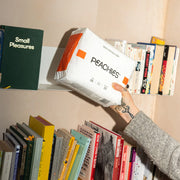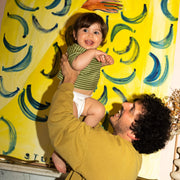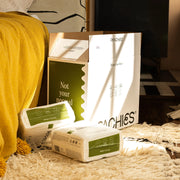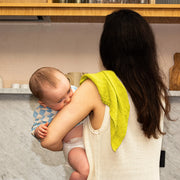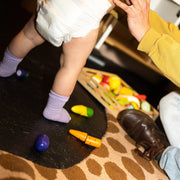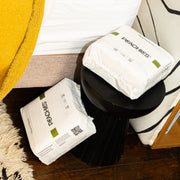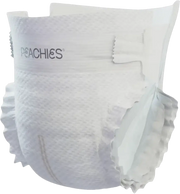By Dr Allyson Mlincsek PT DPT, Pelvic Floor Physical Therapist, Mother & Baby Wellness Collective
Let’s change that.
More often than not you should be wary of one-size-fits-all advice, but one nugget that I do believe to be universally true is: while the symptoms you experience postpartum may be common, they should never be written off as ‘normal’. Urinary leakage, pelvic pain/pain during sex, constipation, and pelvic heaviness are a few symptoms off the top of my head that are treatable and, importantly, are not things you should feel you have to just ‘live with’.
The changes your body went through were significant over the course of 9 months (you truly are amazing) therefore should be treated as such. This fact is true whether you underwent a caesarean or vaginal delivery. No matter your delivery route, those first few weeks postpartum should involve a lot of rest. Rest is an integral part of healing your pelvic floor tissues and your abdominal wall.
Postpartum healing can feel like a minefield - confusing, frustrating, emotional. Fortunately, there are many ways to heal so, to get started, let’s begin with the 5 most common questions I receive in the first 12 weeks postpartum!
0-12 Weeks Postpartum | The 5 Most Common Questions
What can I do in the first few weeks to keep my body moving and to promote healing?
Diaphragmatic breathing! This can help ease pain, calm the nervous system, and reduce tension in the pelvic floor. You can begin this 1-2 weeks postpartum.
Lie on your back on the floor or in bed, place your hands around your rib cage or belly. Take slow and gentle inhales through the nose allowing the rib cage and belly to gently expand.
Can I use ice after a vaginal delivery or caesarean delivery?
Vaginal delivery: Place ice over the vaginal area for 20 minutes 3x/day for the first 3-5 days. You can use a traditional ice pack or even freeze a pad! Adding Witch Hazel to the pad helps with soothing, healing and reducing inflammation.
Caesarean delivery: Place an ice pack over the scar for 15 minutes 3x/day for the first 5 weeks or so postpartum. This again helps with reducing inflammation, promoting healing and minimising discomfort.
What changes should I expect with breastfeeding that could impact the pelvic floor?
Immediately postpartum there will be a large drop in oestrogen levels, and a rise in prolactin levels due to the stimulation to the nipples with breastfeeding. The increased levels of oestrogen can result in vaginal dryness which might lead to symptoms like vaginal burning, itching, and/or pain with sex. One of the first things I recommend is to make sure to use good lubrication with sex (water or silicon-based), and a vaginal moisturiser!
What is c-section scar massage?
The tissues and skin around your c-section scar can become restricted as they heal. The importance of mobilising the tissues is key in preventing numbness, pain, tightness and muscle weakness.
In the first couple weeks, I suggest using a clean cotton swab, Q-tip, makeup brush or soft blanket to brush over the skin surrounding the scar to begin desensitising the healing tissue.
Between 3-6 weeks postpartum, you can massage the skin and muscles around the scar. By 12 weeks, you can slowly start to work on the scar where you move the tissue up/down, side to side, in circles.
Reach out to a Pelvic Floor PT for more guidance on specific techniques!
When can I return to running and other higher intensity workouts?
My famous PT answer is ‘it depends!’. Not everyone heals at the same rate or had the same birth and, because of that, returning to higher level exercises should be based on your experience. Exercise progressions with strengthening are important, and can start as early as 2-3 weeks postpartum.
My standard guidance is to hold off on running until 12 weeks postpartum, yet this is dependent on whether pelvic floor symptoms are present or not.
A local pelvic floor PT will provide specific guidelines and helpful progressions.
We’ve just scratched the surface of what a Pelvic Floor Physical Therapist could cover with you Postpartum. Our goals are to provide women with information on ways to prevent more common complications postpartum, provide recommendations on how to support your bodies postpartum, and answer questions related to the pelvic floor, and how physical therapy can help you!
About Allyson
Hi there! I’m Dr Allyson Mlincsek PT DPT, a Pelvic Floor Physical Therapist with the Mother & Baby Wellness Collective. I graduated from Mercer University’s Doctor of Physical Therapy program in 2016, and I have over 6 years of experience as a physical therapist. I specialise in working with women as it relates to pelvic and obstetric health. I absolutely love educating women on how pelvic floor physical therapy can serve them before, during and after pregnancy.
Based in Atlanta, GA, I have experience in a number of different fields including orthopaedics, acute care, and have now found my passion in serving women with pelvic floor therapy. My goals are to be a practitioner who listens and tailors patient care to the individual and to educate women on how to care for themselves because they deserve it!
I am so excited to work with you and to be a part of your journey!







